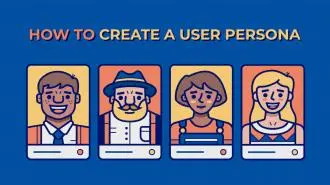Most marketing experts agree that understanding how a buyer’s mind works can be complex.
According to a report from Baymard Institute, 70% of online buyers will leave their carts in 2021. So, the question is: Why do buyers spend so much time adding products to their carts but don’t check out?
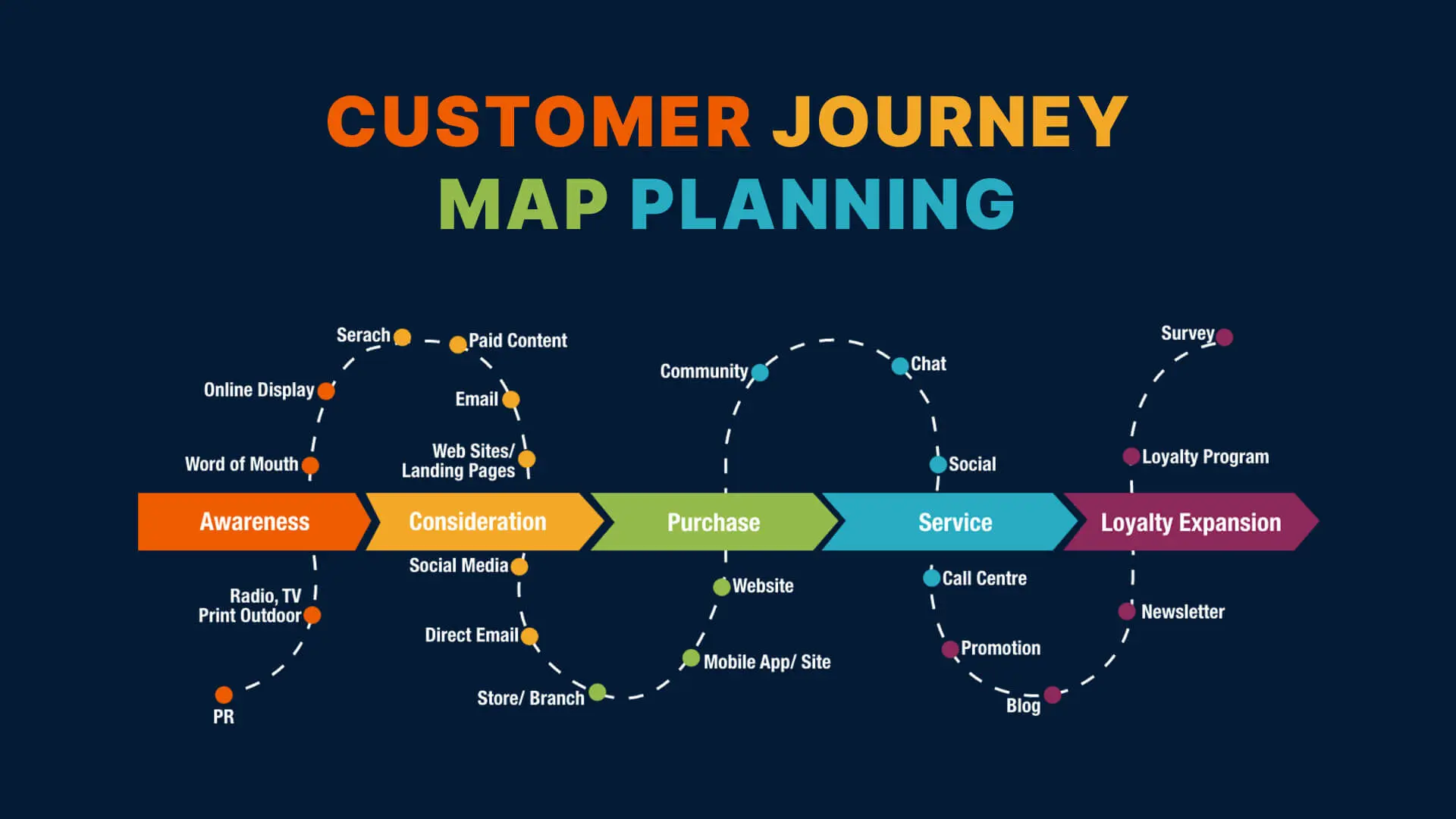
To know the answer, you must have coherent knowledge of the user journey map to understand the customer’s journey to buying your service or product. But what exactly is customer journey mapping? And how can it benefit you? Well, that’s what we will discuss in this article, so read it until the end.
But before we jump into the details of mapping the customer journey, let’s go back to the basics.
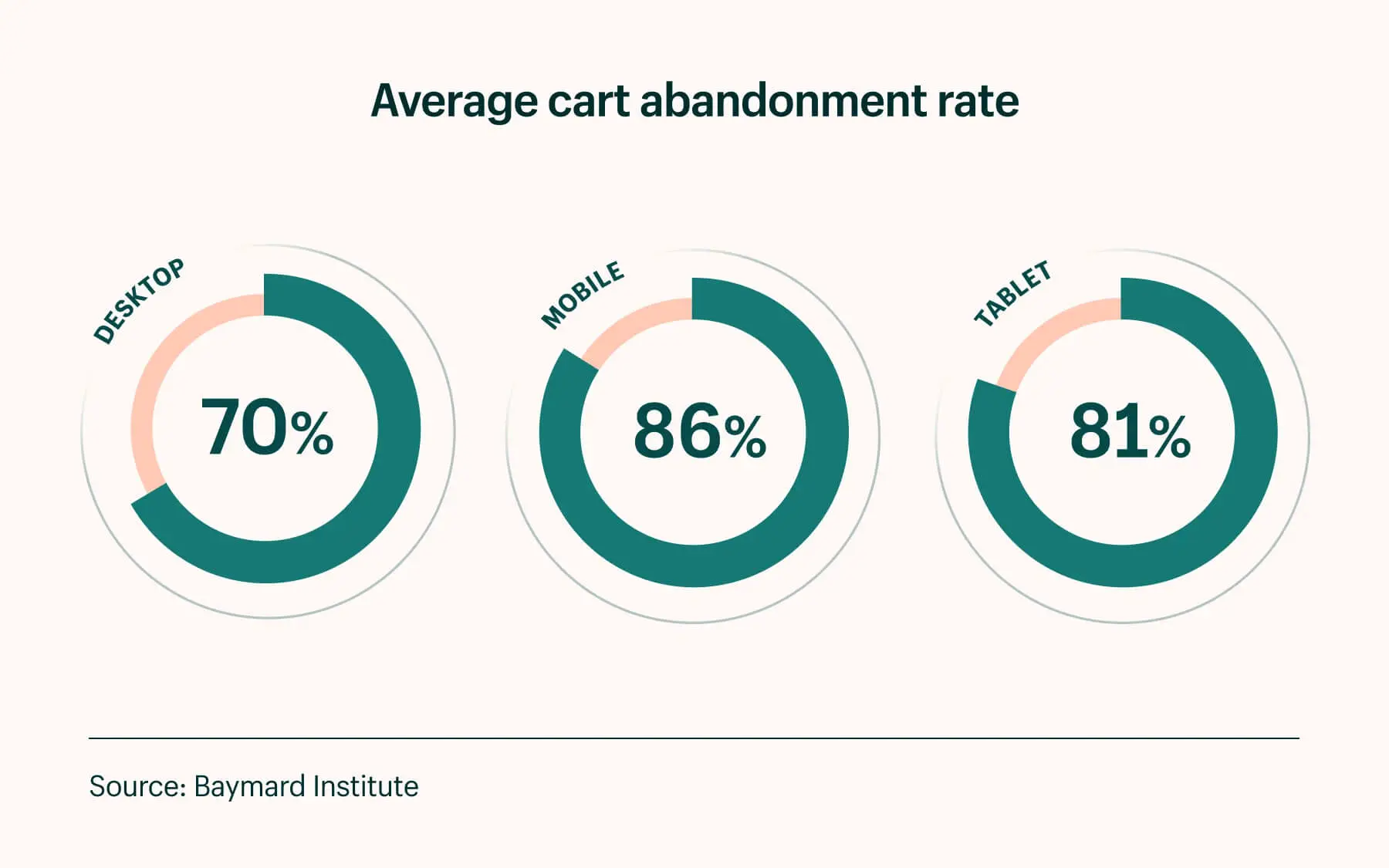
Customer Journey Mapping 101
So, what is a customer journey map? In simple terms, it’s a visual representation of a customer’s experience with a company. It helps you grasp the concerns and expectations of your customers, highlighting what influences their actions.
This valuable information allows brands to enhance the customer experience, boosting retention, loyalty, and conversion rates. You can create your own map or pick from a range of templates that truly reflect your customer’s viewpoint.
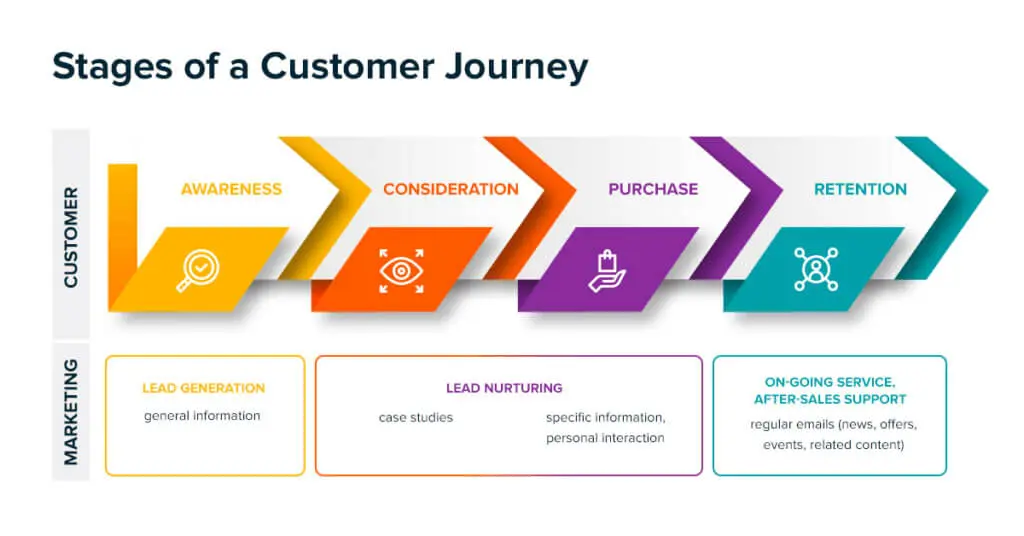
What Is A Customer Journey?
A customer journey is the path a potential customer takes when interacting with a brand to achieve a specific goal. This journey includes everything from discovering the brand on social media to receiving a follow-up email after a purchase.
Also, it is worth noting that the customer journey cannot be predicted or assumed based on your point of view.
Want to receive updates? Sign up to our newsletter
Each time a new blog is posted, you’ll receive a notification, it’s really that simple.
What Is The Importance Of A Customer Journey Map?
Although the customer journey sounds pretty simple, it is much more than compiling a series of customer actions. The user’s thoughts and intentions are important to brands during the steps.
During the customer journey, buyers could speak to a customer support representative, see advertisements for the product, or even try to check out. These are essential steps in a customer journey that affect their behaviour and actions.
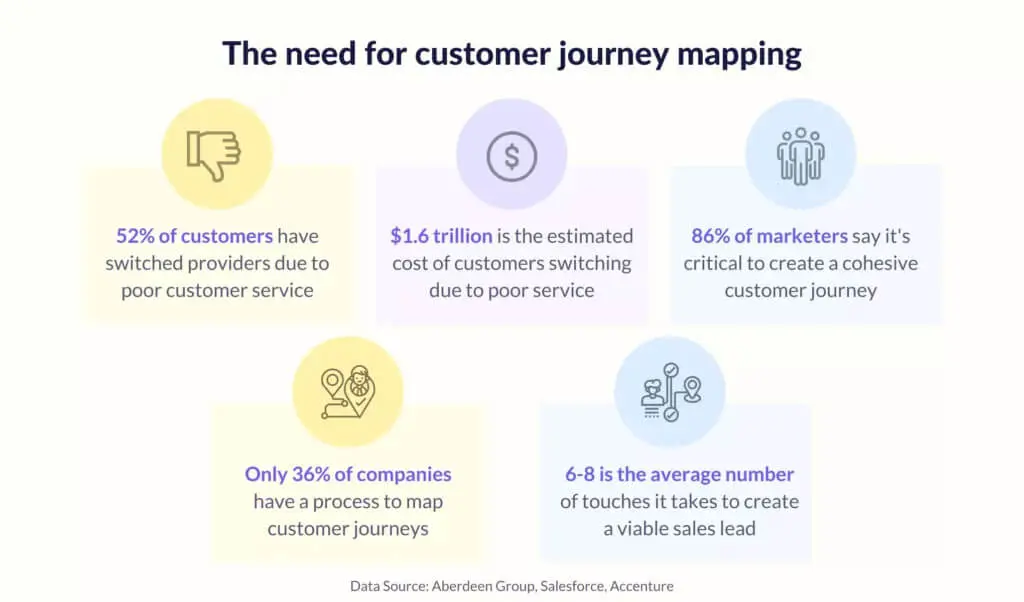
Understanding the customer, their processes and its effects on customer interaction enables you to design and prepare to urge customers to purchase strategically.
That said, it’s worth noting that only having an in-depth understanding of the customer’s journey is barely enough. It would be best to illustrate the complex journey so that you and the other employees can use it as a reference. And this is where developing a customer journey map enters the picture.
What Is Customer Journey Mapping?
With the basics covered, let’s dive deeper. Mapping a customer journey involves creating a journey map tailored to your target personas. It visually represents the customer’s experience with your company. Stakeholders can then view this journey through diagrams, bringing all relevant data together visually.
A customer or buyer journey map shows the current path your customers take from start to finish. This data is vital in determining if they can achieve their goals. If issues arise, your company can pinpoint these roadblocks and work on improving the experience.
Beyond that, you must remember that it is nearly impossible to represent a customer journey from one point to the other. Customers often take a multi-channel, cyclical, and back-and-forth journey. Thus, it becomes increasingly complicated to visualise the customer journey mapping process accurately.
Fortunately, companies and brands can now utilise different types of customer journey mapping tools and methods to portray the buyer journey in infographics, Excel spreadsheets, and notes. Many customer journey map templates and customer journey map examples are available, depending on the type you wish to use. But, of course, you need data from your current customer base and potential customers before creating a customer journey map.
On that note, generating a helpful customer journey map is lengthy but worthwhile. We suggest using a customer journey map template if this is your first time.
What Comprises A Customer Journey Map?
Let’s explore some key elements included in a customer journey map.
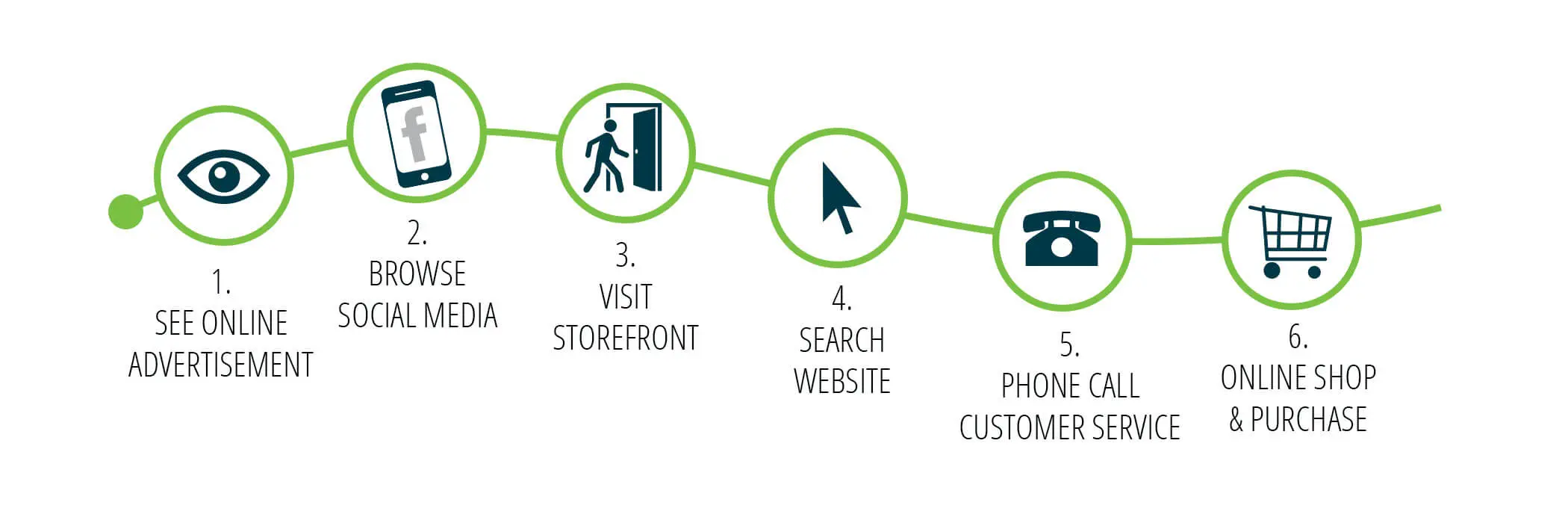
1. The Purchasing Process
A basic form of a customer journey map includes critical journey stages. So, a brand can start the process by drawing up a path to depict the stages of the customer journey to accomplish a goal. In traditional purchasing process stages, each stage is visualised horizontally.
2. The Action Of The Users
This map component explains what a buyer does at every stage of the purchasing process. For instance, they may talk with their family and friends about their needs or demands and the possible ways to meet those demands in the awareness stage. Then, they might consider going through your company’s website and using a credit or debit card to make a purchase.
This component analyses the numerous ways your customers will achieve their goals.
3. Emotions
Remember that your customers are resolving an issue — it does not matter if the goal is small or big. If your services or products provide solutions, they may experience positive emotions, such as excitement, happiness or relief. On the flip side, if the purchase process is complex and lengthy, they might experience different emotions at different stages.
Including these feelings in your customer map might help you reduce unfavourable emotions to prevent them from turning into negative company perceptions.
4. Pain Points
As you know, problems along the way cause negative emotions. So, naturally, including pain points in your journey map can help you understand at which stage the buyer feels negative emotions so that you can analyse the reasons.
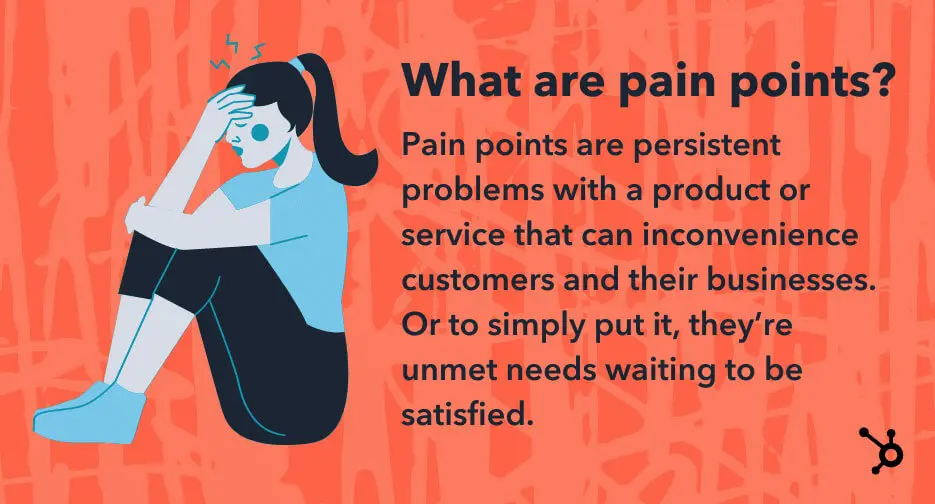
5. Solutions
Solutions form a crucial element of your customer journey map. You and the employees will find different ways to enhance the purchasing process so the buyers experience fewer pain points. That way, you can ensure a positive reception of your product or service in the customers’ minds.
6. Customer Touchpoints
A touchpoint is where your buyer starts to form an opinion about your company. A Google review, a 404 error, communication with your employee or a display ad are customer touchpoints.
For instance, a 404 error page or no search results page endangers the customer journey. So, this particular touchpoint can be viewed as an opportunity to improve the customer experience.
Your business or brand exists beyond the marketing materials and the website. Therefore, you need to consider the numerous types of touchpoints in the customer journey maps as they help unveil scopes for improvement in the purchasing journey.
Best Practices In Creating A Customer Journey Map
Here is how you can create an effective customer journey map:
1. Define The Objectives
First, you have to ask yourself why the customer journey map is being made:
- What is it based upon?
- What is it about?
- What goals do you seek to achieve through this map?
Based on that, you might want to develop a buyer persona. A buyer persona or customer persona is an imaginary buyer with all their psychographics and demographics representing the average customer. When you have a well-planned and defined persona, it becomes easier to direct every feature of the customer journey map towards them.
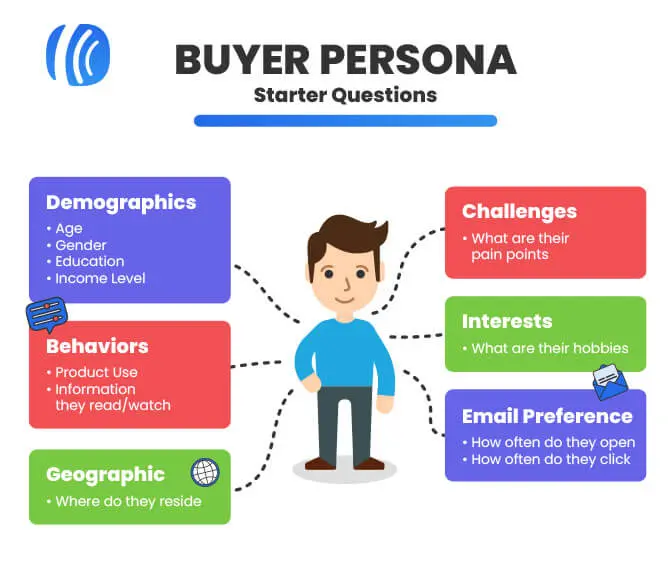
2. Identify Your Personas And Set Their Goals
Next, what you need to do is conduct market research. Perhaps some of the most effective ways to get customer feedback are user testing and questionnaires. However, ensure that you only engage with real customers and prospects, as collecting the voice of the customer through feedback from those genuinely interested in investing in your product is essential.
You would also want feedback from those who have made transactions or communicated with your business before or intend on doing it soon. For instance, you could ask them:
- How did you come to know about our business?
- What is it that you liked the most about our website?
- How long do you usually spend on our website?
- Have you bought any of our products/services? If so, why?
- What are you trying to solve through our product/service?
- How easily can you navigate our website on a scale of 1 to 10?
- Did you ever feel the need for customer support? If so, on a scale of 1 to 10, how was the experience?
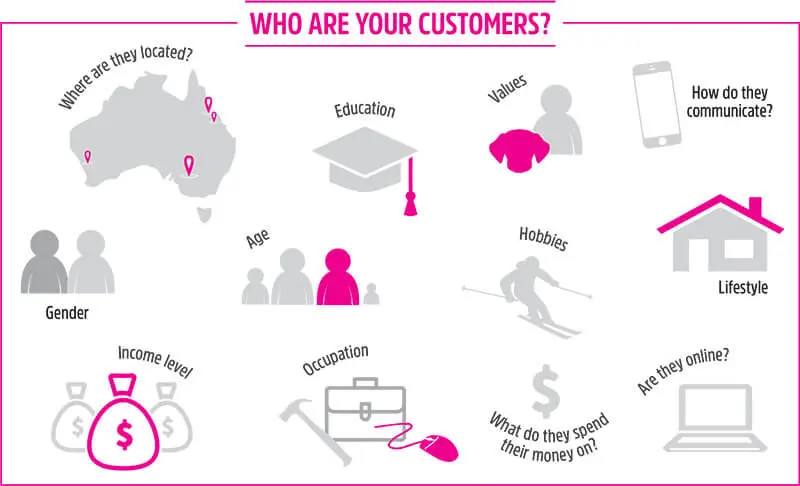
3. Focus On Your Target Customer
Now that you have learned about the various buyer personas that engage with your company focus on one customer persona or a few target customers.
Don’t forget that a journey map tracks a customer’s experience who is taking a particular path with your business. If you bundle too many personas into a single journey, the map won’t demonstrate the use cases adequately the experience of your customers accurately.
Choosing the most convenient customer persona when developing your first basic customer journey map would be wise. You can even utilise a marketing dashboard to compare each and determine which one would be the most ideal for your customer journey map.
There is no need to worry about the ones you don’t select, as you can continually develop a new journey map specific to those types of customers.
4. Jot Down The Touchpoints
Touchpoints include all the interactions between you and your customers. It’s essential to research and list all the touchpoints your prospects and clients use.
This step is crucial in developing a journey map, providing valuable insights into customer actions. For instance, if customers use fewer touchpoints than expected, it might indicate difficulty finding what they need on your website, causing them to leave prematurely.
On the other hand, if they’re using more touchpoints than anticipated, it could mean that your website is challenging to navigate, requiring numerous steps to reach a goal. Understanding the touchpoints would help you determine the objectives and ease of customer journeys regardless of the case.
So, apart from just the website, be sure to consider all the other different ways in which the customer might find your product or service online, such as:
- Review blogs
- Email marketing
- Paid ads
- Social media platforms
We strongly recommend googling your company to find out the different pages that mention your product or service. Verify these on Google Analytics to understand where the traffic is coming from. Then, jot down the common touchpoints in all platforms likely to see an action linked.
You can consider these touchpoints while creating the customer journey map:
A) Customer Actions
Note down your buyers’ actions while they interact with your business. These could include actions as simple as clicking on a newsletter from your company or Googleing your keywords. Doing so will provide you with the opportunity to rationalise your data later. Note that you may end up with a pretty long list of customer actions, which is fine.
Plus, you must identify when your buyers take too many actions to accomplish their goals. Believe it or not, minimising a customer’s steps may seem risky, but it makes for higher conversion rates.
B) Customer Pain Points And Obstacles
Ensure you know about the various obstacles your customers face while trying to achieve their goals. More often than not, the obstacle is price. For instance, a buyer may genuinely love your product or service but not purchase it because of high shipping charges.
Highlighting and discussing such potential obstacles in the journey map could help you reduce or resolve them. For instance, you could incorporate a detailed FAQ section on your website answering all the queries about shipping charges.
C) Customer Motivations And Emotions
There is no denying that marketing is a product of cause and effect. Similarly, every action of the buyer is influenced by emotion. It is also worth noting that a problem or a pain point affects a customer’s emotions. Once you understand these pain points and concerns, you can provide the appropriate materials required to ease the buyer’s emotional journey and experience with your brand.
5. Take Inventory Of The Resources At Hand
Your customer journey map will most likely touch on every aspect of your company. Thus, it will highlight the resources that develop the customer experience. It is imperative to note the current resources and those you may need to enhance the customer’s journey.
Let’s say your journey map exposes some issues with customer service quality. So, you may find that the team doesn’t have enough resources to tackle the issues properly and provide quality customer service. In this case, you can use the customer journey map and inform the management to invest resources to help your service teams work in a customer focused manner efficiently.
By incorporating these new resources into the journey map, you can understand how they impact your brand and drive outsized value. This makes it simpler to persuade decision-makers and gatekeepers to invest money into your projects.
6. Experience The Customer Journey
You are mistaken if you think the work is done after designing the customer journey map. The most important part of the process is to analyse your findings.
Are there visitors who reach your website but don’t buy anything? How can you support the buyers in a better way? It would be best to have the answers to these questions once you have finished designing the map.
When you analyse the customer data, you will know whether or not the buyer’s needs are being met. This way, you can offer invaluable experience and assure people that they can find solutions to their issues with the help of your company.
Remember that all the efforts to map the customer journey remain futile until you experience the journey yourself and address the existing issues.
7. Make The Required Changes
After analysing the results, you should know what the company website should function and look like. Accordingly, you can make the required changes and tweak elements to achieve your goals.
Strategic changes will be beneficial, no matter how big or small, as they align with your business goals since they are directly linked to what consumers have mentioned as pain points. You can ensure that the pain points are addressed correctly with a customer journey map.
Types Of Customer Journey Maps
This section examined the various types of journey maps and their benefits. You can choose any one of the following maps as per your requirements.
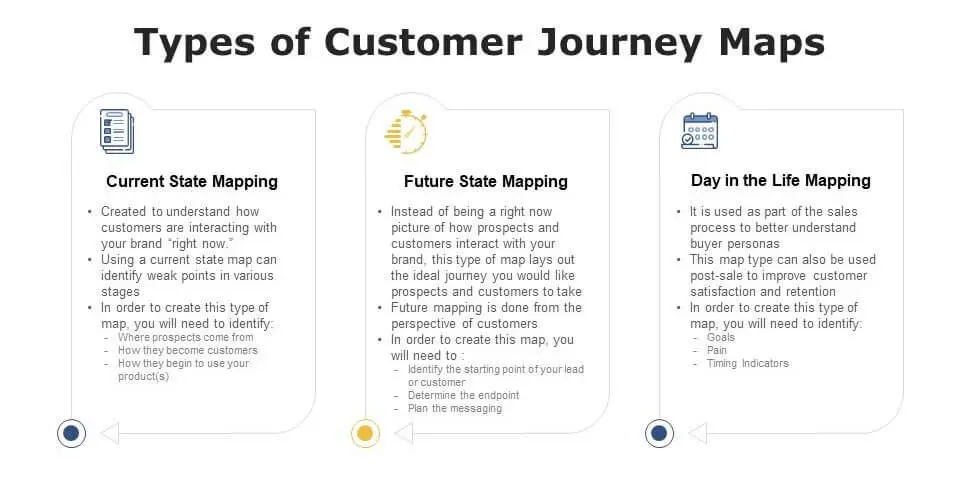
1. Current State Customer Journey Maps
These are the most commonly used customer journey maps. They illustrate the emotions, thoughts, and actions the buyers go through when interacting with your business, so they are widely used for regularly enhancing the customer journey.
2. Day-In-The-Life Customer Journey Maps
As for the day-in-the-life customer journey maps, visualise the emotions and actions your buyer experiences in all day-to-day activities; it doesn’t matter whether or not that includes your business. It offers a deeper understanding of the lives of your buyers and what their pain points are in daily life.
These customer journey maps are best used to tackle unmet customer needs that customers didn’t even know existed. You can use this customer journey map while exploring new marketing strategies.
3. Future State Customer Journey Maps
Next, we have the future state customer journey maps representing the emotions, thoughts, and actions your buyers will likely experience when interacting with your business. These maps are ideal for setting strategic goals, enhancing customer experience and portraying your shared vision.
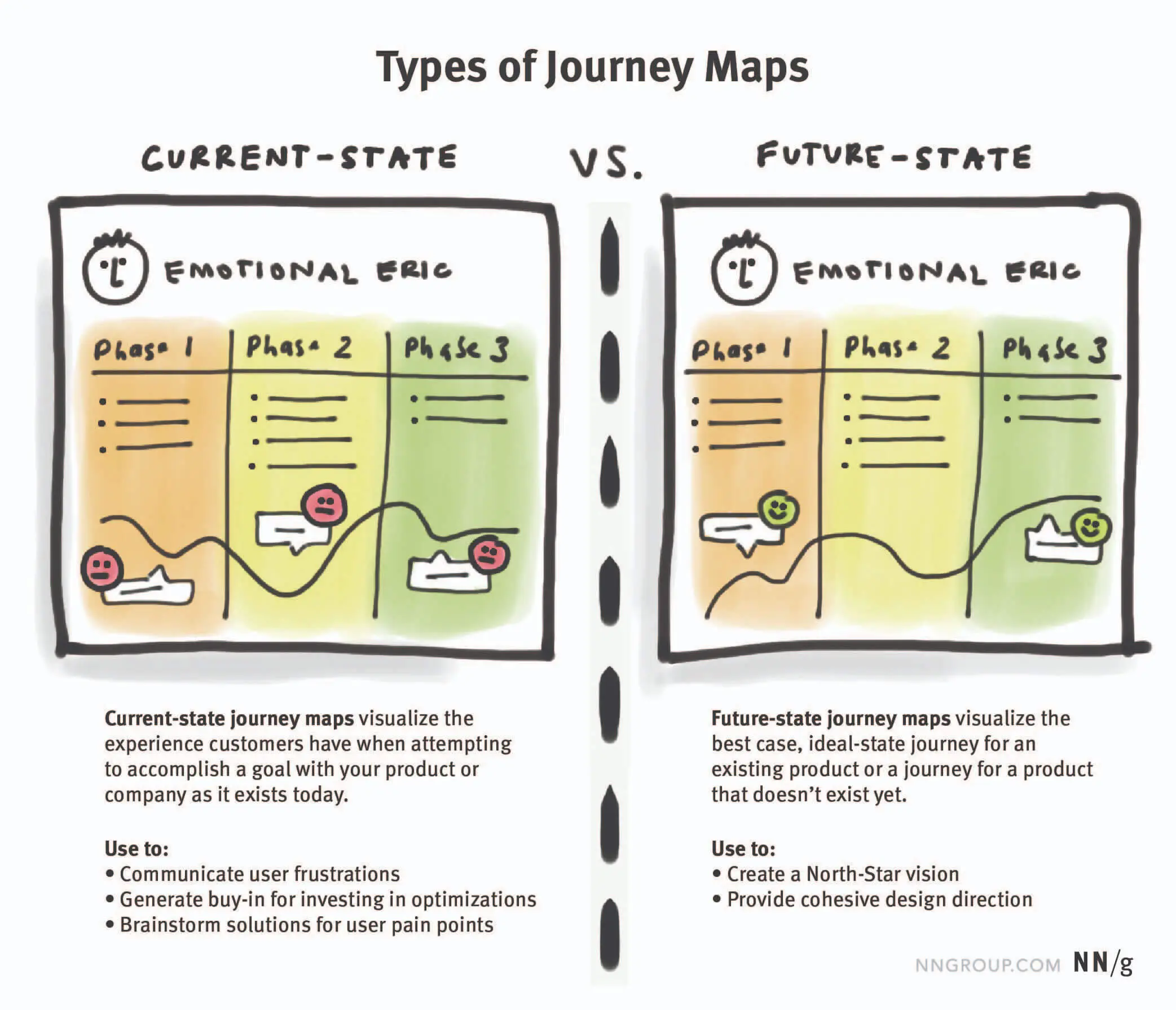
4. Service Blueprint Customer Journey Maps
Service blueprints are customer journey maps that start with a more streamlined version of one of the above maps. But eventually, they incorporate the aspects responsible for providing that experience, such as the processes, technologies, policies and people.
They’re great for figuring out the causes of existing customer journeys and what measures must be taken to reach the intended future customer journeys.
These customer journey mapping examples can help you get started and gain some inspiration about what—and how much—to include and where.
Tips For Mapping An Entire Customer Journey
Here are a few tips to help you efficiently create a customer journey map.
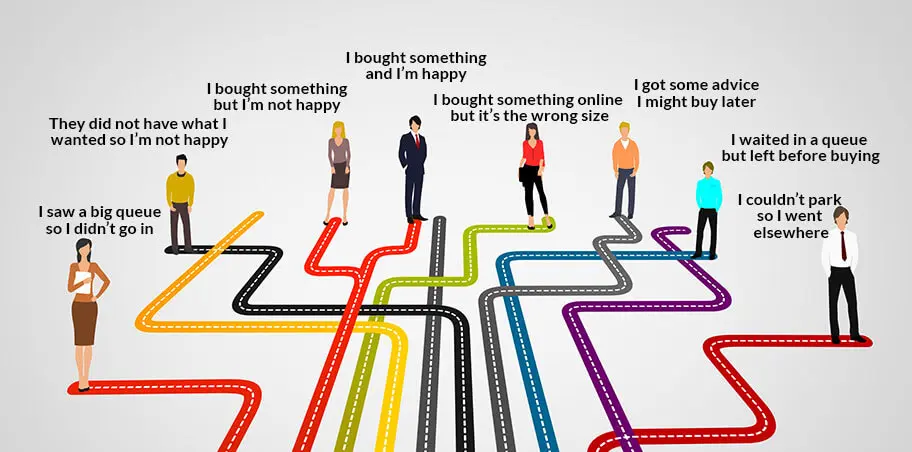
1. Know Your Brand
What do you want, and how do you want to portray your brand? Do you want to enhance the existing customer journey or launch a new product? You can prevent scope creep on large projects if you know what to seek from the map.
2. Survey Customers
Knowing about the customer experience and imagining what it’s like to be in the customer’s shoes can be entirely different. We recommend asking the customers directly about their experience with your company.
3. Keep Reviewing And Updating The Map
As the customer’s buying process evolves when your product or service evolves. A minor change, such as adding an extra field to a lead form, might become a significant stumbling block for buyers. So, review and update the map after each product release.
4. Create Maps For Multiple Personas
Not every customer operates the same way, as many factors, such as demographics and psychographics, come into play. Therefore, creating multiple customer personas and developing a map for each is better.
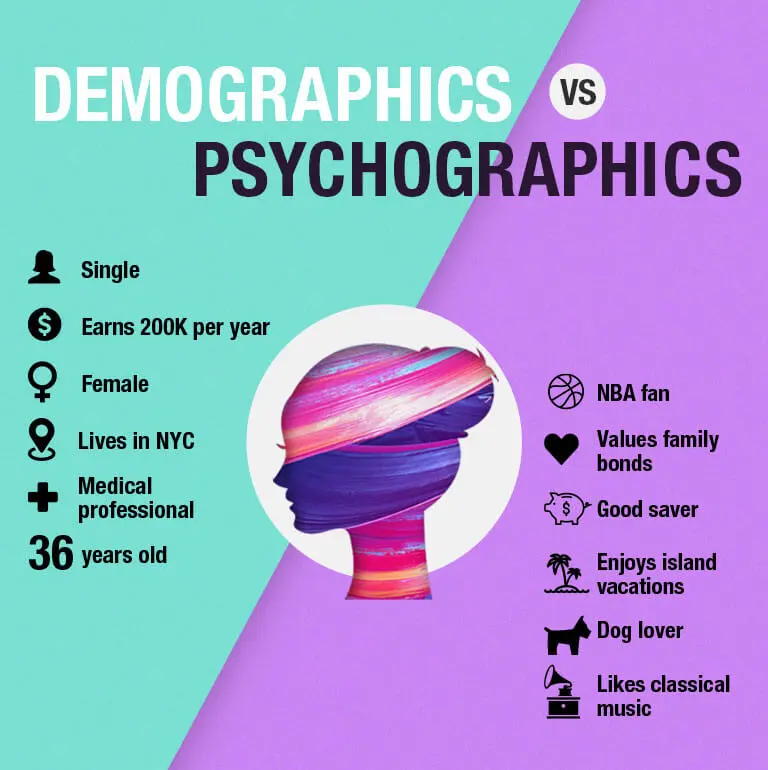
Developing Your Own Customer Journey Map
And so your customer journey begins!
Whether your customers interact with you via social media, email, live chat or other channels, mapping the customer journey out visually helps ensure no customer slips through the cracks.
Stepping into your customer’s shoes and knowing your customers is the best way to help them — and customer journey maps are an excellent tool that lets you see things from a customer’s perspective. They also ensure you achieve customer satisfaction and positive customer experiences.
After all, it visualises their emotions, pain points, and other processes in a simplified way. And once you understand the buyer’s experience with your company, keeping them happy at every stage of the customer journey becomes more accessible, which leads to better conversion rates.
Our team at sitecente® can assist you with researching or creating a customer journey map for your business. Our dedicated customer service team have years of experience helping small businesses reach their goals. We can help you create a customer persona and journey map to allow your business to achieve its full potential and improve your overall customer experience. So, please speak to us today!
With that said, it’s real time for us to bid farewell. Hope to see you soon.

